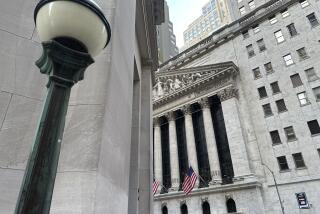It’s That Time Again--for Profit Warnings
- Share via
Every quarter at about this time, companies come clean. If profits during the previous 2 1/2 months weren’t up to snuff, they let investors know.
During the next two weeks, share prices are expected to rise and fall depending on how many companies warn investors about earnings for the quarter ending June 30. Although the state of corporate profits is always an issue for investors, it will takes on even more significance this time around because interest rates are rising. For share prices to stay high, the profits must be there.
“Relative to the last few quarters, there’s going to be more intense focus on earnings,” said David Rolfe, chief investment officer at Wedgewood Partners Inc., which oversees about $65 million. “We don’t have a backdrop of terrific interest-rate news, so any company that issues bad news will be punished severely.”
The yield on the benchmark 30-year Treasury bond rose as high as 7.19% last week, the highest since May 3, 1995. Higher rates make it more expensive for companies to borrow the money needed to expand their businesses. Higher rates can also lure investors out of stocks and into fixed-income investments such as bonds.
When the long bond’s yield was last this high, the Dow Jones industrial average was around 4375. The average closed about 1,300 points above that Friday.
“If we see higher interest rates start to cut into demand for housing or cars--things that have to be financed--then we’ll definitely see the stock market heading down,” said Isaac Green, a money manager for Loomis, Sayles & Co., which oversees $6.5 billion. “I’d get nervous if I saw rates at 7 1/2%.”
Investors didn’t treat stocks kindly last quarter when companies were coming out with profit warnings: From March 18 to 29, the Dow industrials fell 1.69%. That compares with a 9.2% gain for the whole quarter.
In addition, the dollar’s rise against major currencies this quarter could eat into profits for companies that do a lot of business abroad. When the dollar is strong, a U.S. company’s exports are more expensive in foreign markets and its overseas profits are worth less when converted into dollars.
More to Read
Inside the business of entertainment
The Wide Shot brings you news, analysis and insights on everything from streaming wars to production — and what it all means for the future.
You may occasionally receive promotional content from the Los Angeles Times.










